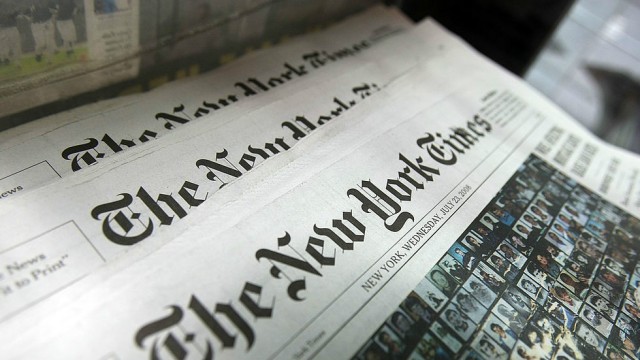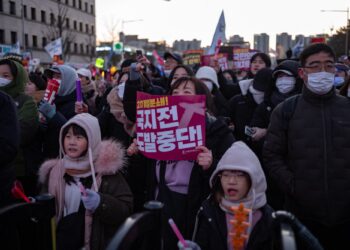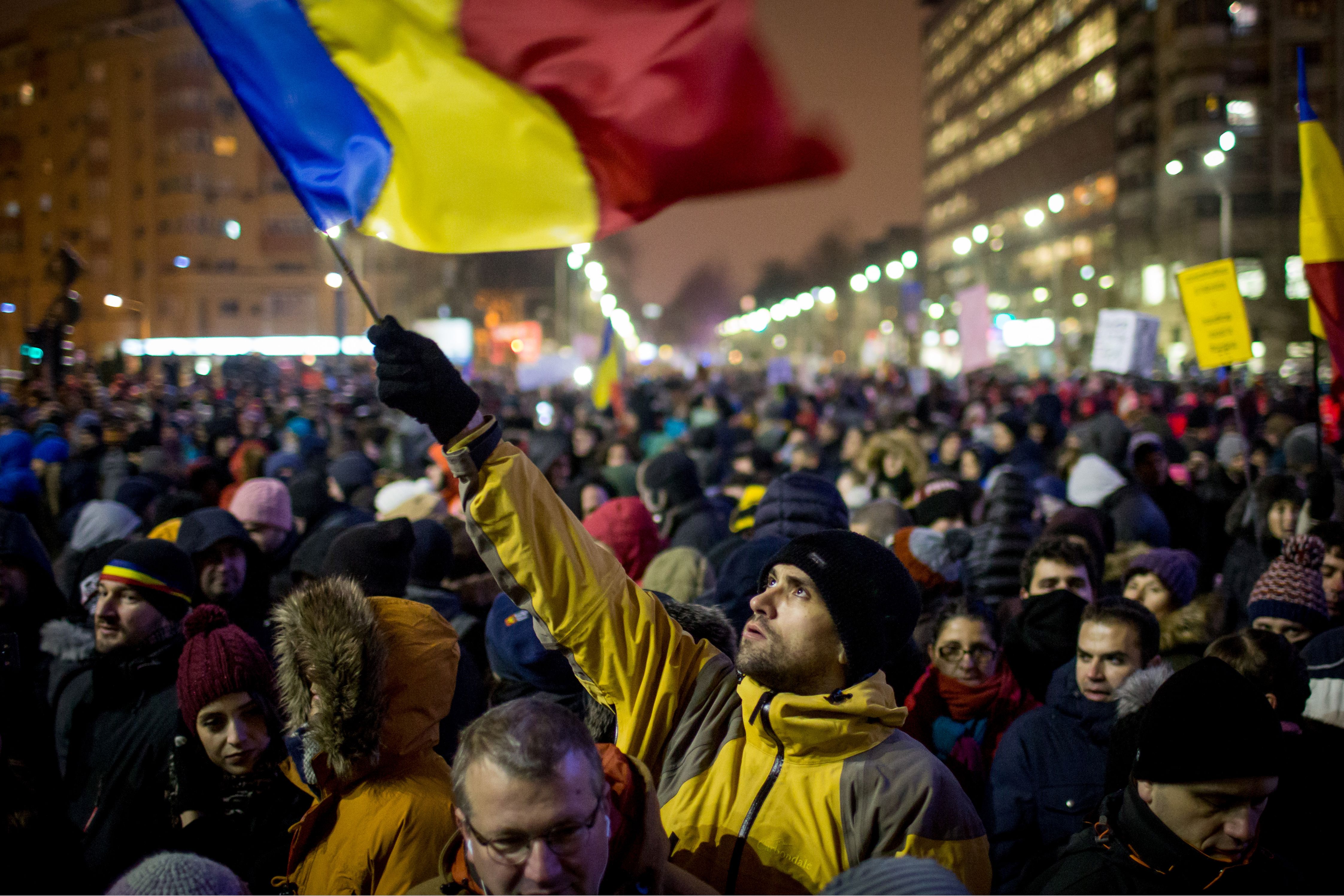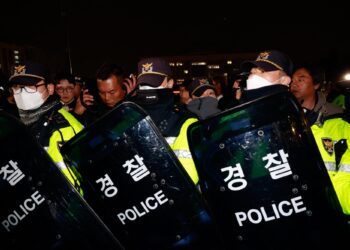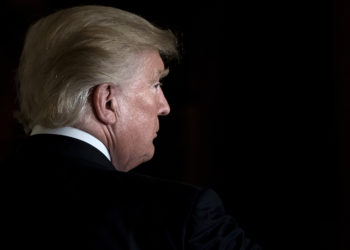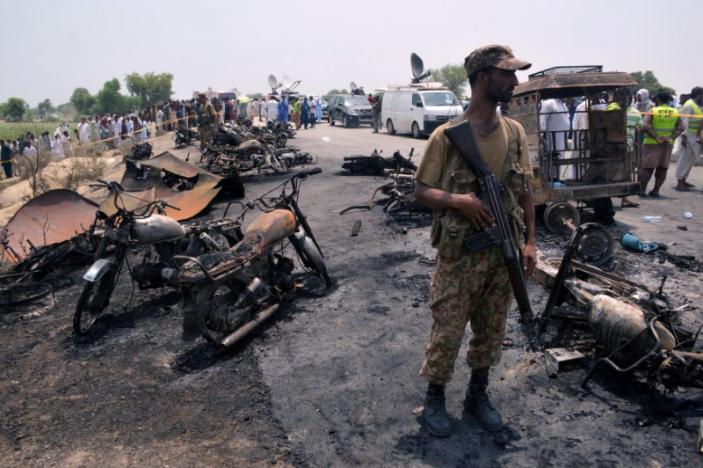On June 14, in response to the shooting of GOP lawmakers practicing baseball in Arlington, VA, The New York Times editorial board came out with an indictment of “America’s lethal politics.” They aimed to shed light on the “familiar pattern” of virulent political opposition in recent assaults — in this case, from the left.
To provide an example from the left, they brought up the 2011 shooting of Representative Gabby Giffords and connected the shooting to a Palin PAC-circulated map showing Democratic electoral districts targeted with crosshairs. The editorial board continued:
“Conservatives and right-wing media were quick on Wednesday to demand condemnation of hate speech and crimes by anti-Trump liberals. They’re right. Though there’s no sign of incitement as direct as in the Giffords attacks, liberals should of course hold themselves to the same standard of decency that they ask of the right.”
Not long after, the Washington Post fact-checkers challenged the alleged “direct” link from the 2011 shooting. The verdict, which they had already concluded in 2011: “bogus.”
How ironic that The NY Times made a call for the left to hold themselves to the same standards demanded of the right with a fake-news blunder of epic proportions in the same sentence? The editorial board handed a silver bullet to President Donald J. Trump’s “failin’ New York Times,” and several right-leaning voices took to writing — and rightly so.
What’s going on? And what can we do about the very real threat of fake news?
But, first, what is fake news? This question was asked a day later on Real Time by Bill Maher to Breitbart editor-in-chief Alex Marlow in a panel that also included counter-terrorism expert Malcolm Nance.
Mr. Marlow answered with an interesting history of the term: the left created it to indict anything on the right, then the right “quickly re-appropriated” it to call out false information from any “left-wing outlet.”
Mr. Maher replied: “But that was a lie, because fake news was [sic] things that people knew when they were writing them were absolute bullshit. They were putting it out there just to confuse people because people read and they don’t check things out then they share it. And we saw that, like the thing about Hilary Clinton running a child sex ring out of a pizza parlor. That’s fake news.”
Mr. Maher is right.
Of course, the narrative I have heard and seen on fake news has come from the left and usually goes something like this: “these dumb rednecks have ruined the country by electing Trump after falling for fake news on Facebook.”
Although there is an indisputable presence of fake news on the right, we must also acknowledge the left is just as vulnerable to fake news, no matter how educated they seem.
Fake news from the left
Last fall, two people I knew from Berkeley shared a post from an overtly-left-leaning page with a picture of Haitians being overwhelmed by floods. Something like “the imperialist U.S. does not care about the crisis in Haiti” was the message. After a quick fact-check, I found out the pictures had nothing to do with Haiti or 2015. They were from Kenya in 2008.
When Mr. Trump dropped the “mother of all bombs” (MOAB) in Afghanistan in April, one of the two people mentioned above had another post. After criticizing the U.S. as imperialist, they added “the bomb they dropped on Afghanistan today they say was big enough to wipe out the state of New York!… Just plain evil.” A simple fact-check later and I let them know that MOAB—a non-nuclear bomb—could barely even destroy a fraction of Manhattan.
Around the same time, another Facebook acquaintance posted with glee that they had been invited to participate in an international conference on food security being held this week. The screenshot they posted was a LinkedIn invitation, written in horrible English and coupled with a poorly designed conference flier. The conference is presented by an academic event organizer that has been on my radar as I study the rise of predatory pseudo-academia. Did this person on Facebook not realize that they had no qualifications to be considered an international expert on food security?
After I let all 3 people know of their fake-news sharing, all posts were deleted.
Major risks
As our politics become more and more divisive, and as we dig ourselves into our online echo chambers, we become susceptible to the news we “like,” even if it’s fake. Whether it’s a claim of poor Haitians drowning in flooded streets or Clinton running a pizza-shop sex ring, both the left and the right are finding for themselves more ‘ammo’ for political arguments.
Even from a national-security perspective, this is a threat. Instead of a conventional cyber-attack to meddle in our democratic process, which Malcolm Nance has written on, concerted efforts to spread completely legal misinformation seem to be lucrative alternatives for destabilizing the United States. These aren’t imminent risks; we have already experienced the consequences.
What needs to be done about fake news?
There is a simple solution—at least in theory—to this issue: education.
If we tend to treat the fake-news situation as a real threat capable of undermining our democratic engagement and national security, we must develop initiatives to educate the public on how to verify online stories. The processes aren’t difficult. Verification simply involves corroborating what’s in front of us with open-source information (OSINT) that is publicly accessible on the Internet. It’s twenty-first century fact-checking. One need not be an intelligence expert, journalist, or software engineer to run reverse-image or advanced keyword searches.
There is a growing community of people who are serious about digital-verification literacy, including: FactCheck.org and Facebook, the News Literacy Project, the Emergent project by the Tow Center for Digital Journalism at Columbia University, the WITNESS Media Lab, Snopes, Gawker’s Antiviral, Brooke Borel, and the authors of the Verification Handbook.
Furthermore, in the particular context of international criminal law, the Human Rights Center at UC Berkeley School of Law is leading the effort to train students in effective digital-verification strategies to detect fake news and even verify alleged war crimes and crimes against humanity.
The good news is we are now paying more attention to the need to educate the public, despite much damage. We need to start developing comprehensive standards among all these initiatives to ensure consistency, and we need to begin thinking about early childhood education, as our toddlers are already being raised in front of screens.
Although The New York Times had its own fake-news blunder last week, they were right that both sides need to “hold themselves to the same standard of decency.” Both need to uphold basic digital-verification standards. Our nation depends on it, or as Brooke Borel has written, “if journalism is a cornerstone of democracy, then fact-checking is its building inspector.”
Disclaimer: The views and opinions expressed here are those of the author and do not necessarily reflect the editorial position of The Globe Post.

